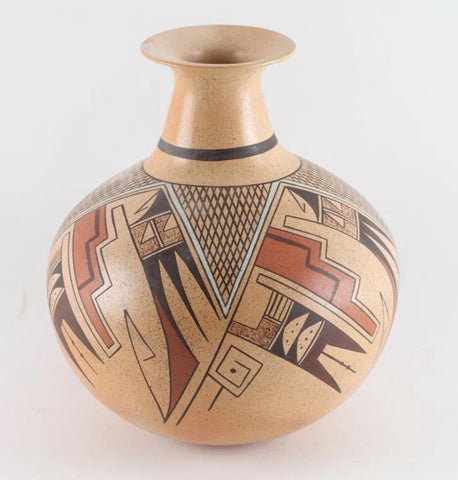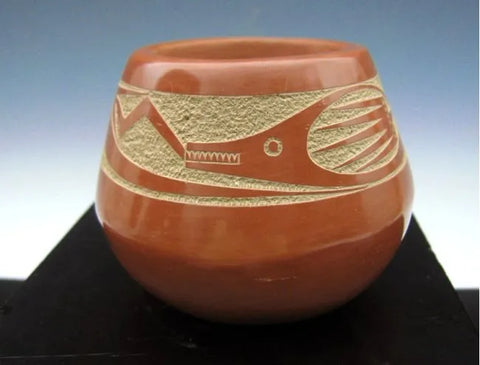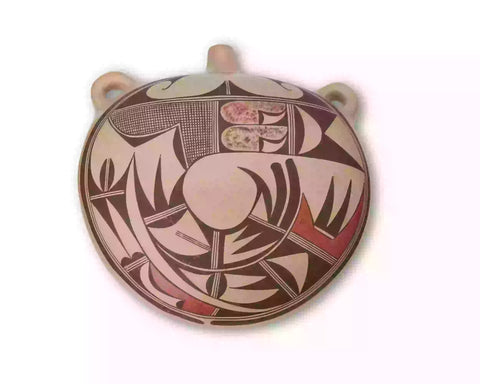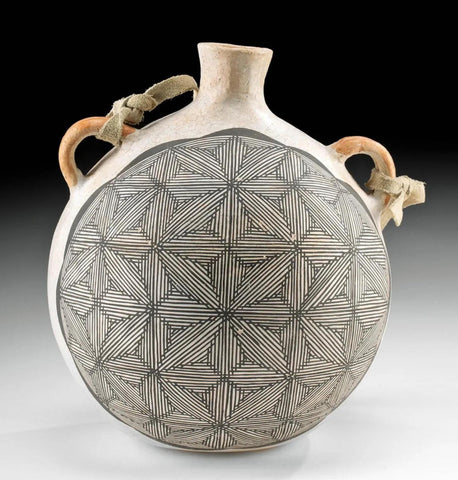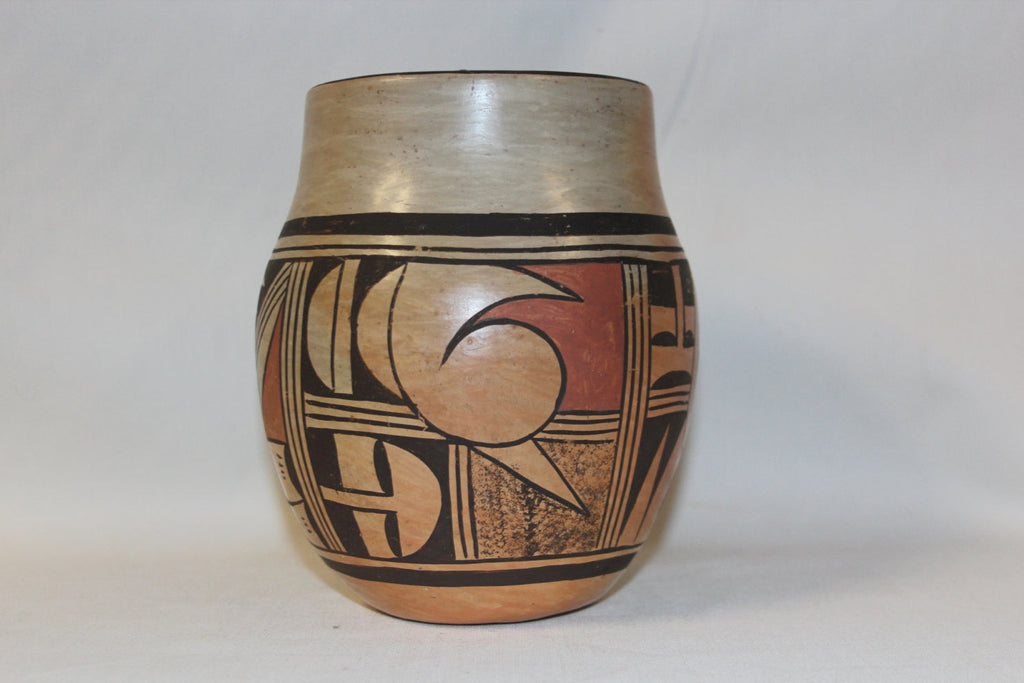
Hopi Pottery : Native American Hopi Pottery Jar, signed by A. Honie #52 Sold
$ 300.00
Hopi Pottery
52. Description: Mid 1900's, Classic poly chrome pottery jar with geometrics and bird motif, signed by A. Honie. Good condition. 6" x 5".
"Antoinette Silas Honie has been an active Hopi potter since the age of 15. She attributes much of her development and success to mother, Roberta Silas:
"At 15 years of age I went to demonstrate at Bloom Field, Indiana University. I learned to make pottery from my mother Roberta Silas. Some designs I use are inherited from my mother and some I have developed myself. I ship a lot of my pottery to Jackson Hole Wyoming. I have won ribbons and awards at the Northern Arizona Museum. I also market my products to collectors. I want to tell the world that everything is done with traditional native products and that it is very labor some."
Antoinette has appeared in magazines and publications dealing primarily with Native American art and Hopi Pottery, in particularly. These include Hopi-Tewa Potters by Gregory Schaaf, p. 154; and Art of the Hopi, Contemporary Journeys on Ancient Pathways by Jerry and Lois Essary Jacka, p. 53. Her work also appears as the back cover shot on Art of the Hopi, as merit of her artistic prowess.
Antoinette has also won numerous awards, including ribbons at the Museum of Northern Arizona Hopi Marketplace, and is best known for her abstract parrot images (indicative of her clan), terraced clouds, and other traditional Hopi symbols which are reminiscent of the pottery shards from the Sikyatki ruins area." (Source: Ancient Nations)
A History of Pueblo Pottery:
Pueblo pottery is made using a coiled technique that came into northern Arizona and New Mexico from the south, some 1500 years ago. In the four-corners region of the US, nineteen pueblos and villages have historically produced pottery. Although each of these pueblos use similar traditional methods of coiling, shaping, finishing and firing, the pottery from each is distinctive. Various clay's gathered from each pueblo's local sources produce pottery colors that range from buff to earthy yellows, oranges, and reds, as well as black. Fired pots are sometimes left plain and other times decorated most frequently with paint and occasionally with applique. Painted designs vary from pueblo to pueblo, yet share an ancient iconography based on abstract representations of clouds, rain, feathers, birds, plants, animals and other natural world features.
Tempering materials and paints, also from natural sources, contribute further to the distinctiveness of each pueblo's pottery. Some paints are derived from plants, others from minerals. Before firing, potters in some pueblos apply a light colored slip to their pottery, which creates a bright background for painted designs or simply a lighter color plain ware vessel. Designs are painted on before firing, traditionally with a brush fashioned from yucca fiber.
Different combinations of paint color, clay color, and slips are characteristic of different pueblos. Among them are black on cream, black on buff, black on red, dark brown and dark red on white (as found in Zuni pottery), matte red on red, and poly chrome a number of natural colors on one vessel (most typically associated with Hopi). Pueblo potters also produce un-decorated polished black ware, black on black ware, and carved red and carved black wares.
Making pueblo pottery is a time-consuming effort that includes gathering and preparing the clay, building and shaping the coiled pot, gathering plants to make the colored dyes, constructing yucca brushes, and, often, making a clay slip. While some Pueblo artists fire in kilns, most still fire in the traditional way in an outside fire pit, covering their vessels with large potsherds and dried sheep dung. Pottery is left to bake for many hours, producing a high-fired result.
Today, Pueblo potters continue to honor this centuries-old tradition of hand-coiled pottery production, yet value the need for contemporary artistic expression as well. They continue to improve their style, methods and designs, often combining traditional and contemporary techniques to create striking new works of art. (Source: Museum of Northern Arizona)
----------------
View the other items in my shop: http://www.etsy.com/shop/CulturalPatina?ref=shopsection_shophome_leftnav

